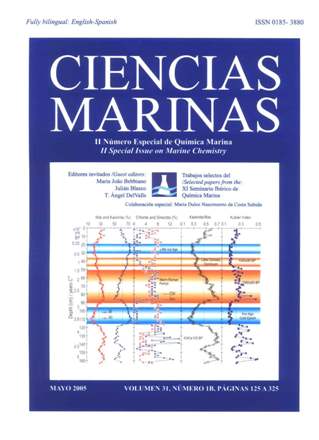Induction of metallothioneins in Mullus barbatus as specific biomarker of metal contamination: A field study in the western Mediterranean
Main Article Content
Abstract
Red mullet (Mullus barbatus, Linnaeus, 1758) is one of the fish species used as bioindicator in the Mediterranean Pollution Monitoring Programme (MEDPOL). This paper presents the results of a field study on the induction of hepatic metallothioneins (MT) in red mullet as specific biomarker of metal contamination. Specimens of M. barbatus were collected in six areas with different degrees of anthropogenic activities along the Iberian Mediterranean coast. The environmental exposure to heavy metals of the populations was determined through the analyses of surface sediments collected in each study area. The MT levels obtained showed statistically significant differences between areas, but not between specimens of different sex. Furthermore, the highest MT levels were found in the most polluted areas. Hepatic MT levels in red mullet reflect the metal contamination present in surface sediments, especially for Cu, for which a significant linear regression was found. The MT levels are better correlated with Cu and Cd concentrations than with Zn and Hg concentrations. The MT values obtained in this study are the first to be reported for this species in the Iberian Mediterranean and they should help in the interpretation of MT levels and to establish MT background levels for M. barbatus in the western Mediterranean.
Downloads
Article Details
This is an open access article distributed under a Creative Commons Attribution 4.0 License, which allows you to share and adapt the work, as long as you give appropriate credit to the original author(s) and the source, provide a link to the Creative Commons license, and indicate if changes were made. Figures, tables and other elements in the article are included in the article’s CC BY 4.0 license, unless otherwise indicated. The journal title is protected by copyrights and not subject to this license. Full license deed can be viewed here.

